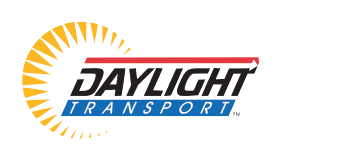Business-to-business integration (B2Bi)
Business-to-business integration (B2Bi) has become a significant driving force in present-day organizations and is a key catalyst for growth. It allows organizations to leverage their existing processes, people, technology, and information in order to stay ahead of the competition.
Daylight offers several integration tools that support LTL back-office activities, including pickup scheduling, tracking, appointment confirmations, proof of deliveries, bills of lading, invoicing and shipping quotes.
Update – December 1, 2017
API Integration Services
Daylight Transport has developed new technology that supports integration via API technology. We are now offering our first set of public APIs: Rate Quote, Pickup Request, Transit Times, Fuel Surcharge, and Tracing.
For more information, please review our Portal site at https://dylt-portalapi.apigee.io
Benefits of B2Bi
- Improved visibility to your shipments: When businesses are well-integrated, the improved connectivity will streamline communication between participants of different operations. As a result, organizations can easily share more information that was previously difficult, costly and/or time-consuming to access. This kind of information allows you to make future business decisions that are based on fact and not on gut or opinion.
- Better communication: When businesses are well-integrated, the improved connectivity will streamline communication between participants of different operations. As a result of this, organizations can easily share more information that was previously difficult, costly and/or time-consuming to access. This kind of information allows you to make future business decisions that are based on fact and not on gut or opinion.
- Improved productivity: Rather than having to duplicate data from one place to another and/or wait for information to be sent or keyed in by other departments, employees can now spend more time on crucial tasks that will help the business grow.
B2Bi offerings
Electronic Data Interchange (EDI)
Electronic Data Interchange (EDI) eliminates paper documents and provides a more efficient, accurate and timely exchange of information in a standardized format. Daylight supports ANSI ASC X12 standards in which all data is communicated between the carrier, shipper, and the consignee in electronic documents called “transaction sets.” The supported transactions are listed below.
204 – Load Tender (Pickup)
You can use the EDI 204 transaction set to tender shipments to Daylight. This set may be used for creating a new pick up request.
* Get the full Implementation Guideline here.
210 – Freight Details and Invoice (Invoice)
The 210 transaction is an electronic invoice that Daylight can configure to be sent directly to your organization, a consignee, or a third-party payment center of your choice. These message sets provide an itemized detail of the freight charges, along with other information you would typically find on a paper invoice.
* Get the full Implementation Guideline here.
214 Shipment Status Message
The 214 transaction set represents a Shipment Status Message. Daylight can provide you or your consignee with the status of tendered shipments.
* Get the full Implementation Guideline here.
Set up B2Bi with Daylight
In order to set up B2Bi with Daylight, discuss your integration needs with your account executive. If B2Bi is the right solution for your firm, your account executive will gather the necessary information to create a formal request with our IT department to start the onboarding process.
For technical inquiries about our service offerings, feel free to contact [email protected]

Typical 204 – Load Tender (Pickup)
- Carrier identification information
- Scheduling information
- Equipment requirements
- Ship-to location information
- Contact information for shipment recipient
- Information on consignees
- Description of goods, including weight and other units of measure
- Shipping instructions
Typical 210 – Freight Details and Invoice
- Invoice date and number
- Bill-to name and address information
- Order information detail, including items, quantities and weights
- Shipper name and address information
- Terms of payment
- Delivery information, including proof of delivery, tracking numbers, etc.
Typical 214 Shipment Status Message
- Shipped-from address information
- Destination address information
- Shipment’s current location
- Dates and times (including pickup and estimated delivery)
- Proof of delivery
- Shipment status details
